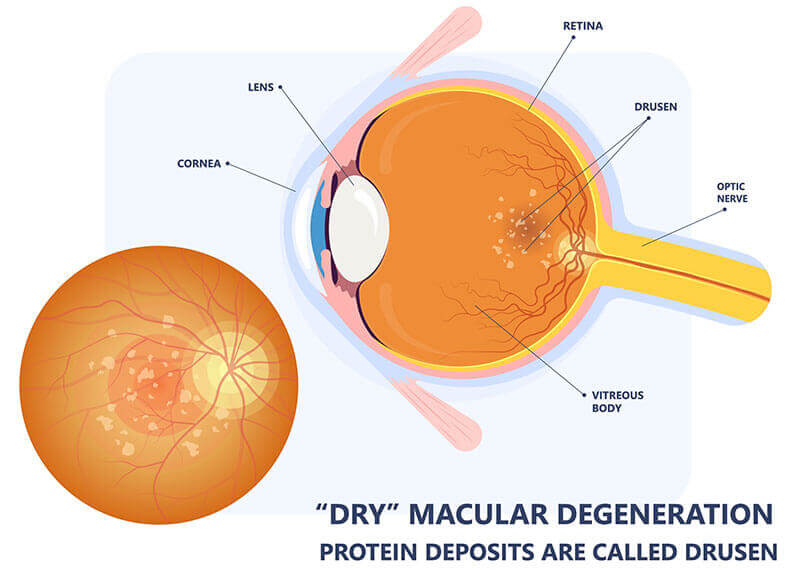
Insight into Vitreo-Retinal Diseases: Common Conditions and Symptoms
Vitreo-Retinal Diseases: A Brief Introduction
Vitreo-retinal diseases encompass a range of conditions affecting the vitreous and retina of the eye, both crucial components for vision. The retina, a thin layer of tissue located at the back of the eye, is responsible for converting light into neural signals, which are then sent to the brain for visual recognition. The vitreous is a gel-like substance that fills the eye, supporting the retina and maintaining the eye’s shape. Diseases affecting these parts of the eye can significantly impair vision and, in severe cases, lead to blindness.
Symptoms of Vitreo-Retinal Diseases
Symptoms of vitreoretinal diseases can vary widely depending on the specific condition but often include:
- Visual Disturbances: These can range from floaters (specks or clouds moving in your field of vision) to severe cases of vision loss.
- Flashes of Light: Often an indication of the retina being tugged or torn.
- Distorted Vision: This includes blurriness, wavy lines, or micropsia (objects appearing smaller than they are).
- Peripheral Vision Loss: A reduction in the ability to see objects to the side while looking straight ahead.
- Central Vision Loss: Affects the central part of the vision, crucial for activities like reading and driving.
Common Vitreo-Retinal Diseases
- Diabetic Retinopathy: This condition is a complication of diabetes characterized by progressive damage to the blood vessels of the retina. It’s one of the leading causes of blindness in American adults. Early stages may not have symptoms, but as the disease progresses, symptoms like blurred vision and vision loss can occur.
- Retinal Detachment: This is a medical emergency where the retina peels away from its underlying layer of support tissue. Initial symptoms may include an increase in floaters and flashes of light. If not promptly treated, it can lead to permanent vision loss.
- Age-Related Macular Degeneration (AMD): AMD affects the macula, the part of the retina responsible for central vision, and is a major cause of vision loss in older adults. Symptoms include blurred vision and a dark area in the center of vision.
- Retinal Vein Occlusion: This occurs when one of the tiny retinal veins becomes blocked, usually by a blood clot. Symptoms can include a sudden blurring or vision loss in part or all of one eye.
Treatment and Management
The treatment of vitreoretinal diseases depends on the specific disease and its severity. Some common treatments include:
- Laser Surgery: Used in diseases like diabetic retinopathy to seal leaking blood vessels or to prevent them from growing.
- Vitrectomy: A surgical procedure to remove the vitreous gel, often used in cases of retinal detachment.
- Injections: Medications like anti-VEGF agents can be injected into the eye to slow down the progression of diseases like AMD.
Macular Holes and Macular Puckers: Special Focus
In the spectrum of vitreoretinal diseases, macular holes, and macular puckers are noteworthy conditions that warrant specific attention:
- Macular Holes are small breaks in the macula, leading to blurred and distorted central vision. They can develop from vitreous pulling away from the retina or due to eye injuries. Surgery can often improve vision.
- Macular Puckers involve scar tissue formation on the macula, causing vision to become distorted and sometimes blurred. This condition may result from vitreous detachment, retinal tears, or inflammation. Surgical intervention may improve symptoms.
Both conditions highlight the importance of the macula in vision and underscore the diverse impact of vitreoretinal diseases on eye health. Early detection and treatment are crucial in managing these diseases effectively. Regular eye exams, especially for individuals with risk factors such as diabetes or a family history of retinal diseases, are essential for maintaining eye health and preventing vision loss.
Vitreo-retinal diseases represent a complex group of conditions that can profoundly affect vision. Understanding these diseases, their symptoms, and treatment options is vital for those at risk and for the broader community to support eye health and prevent vision impairment.
